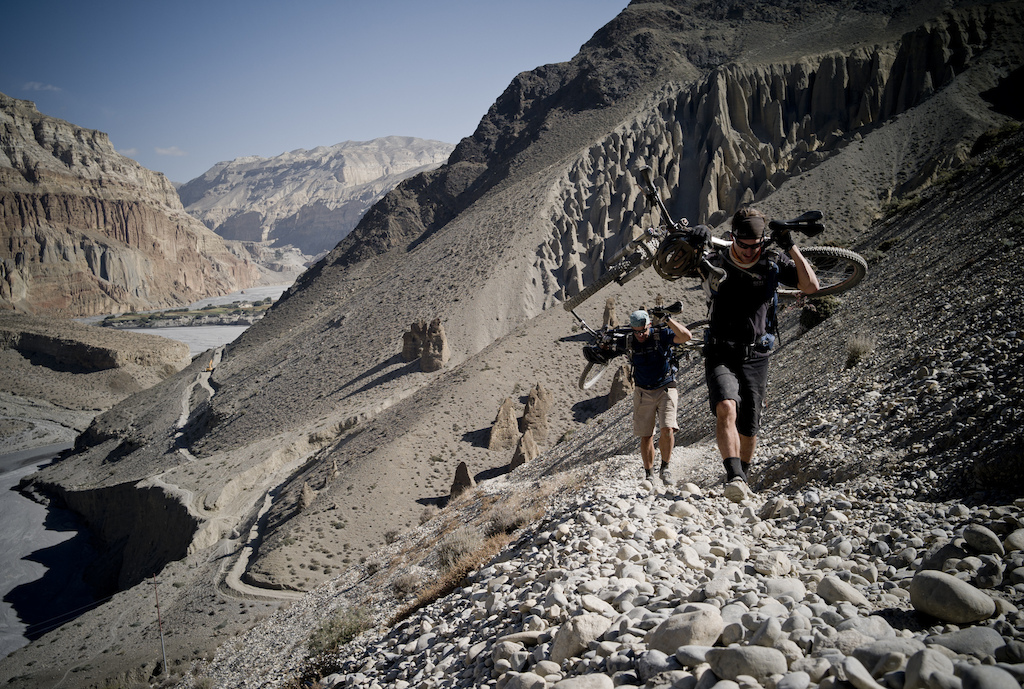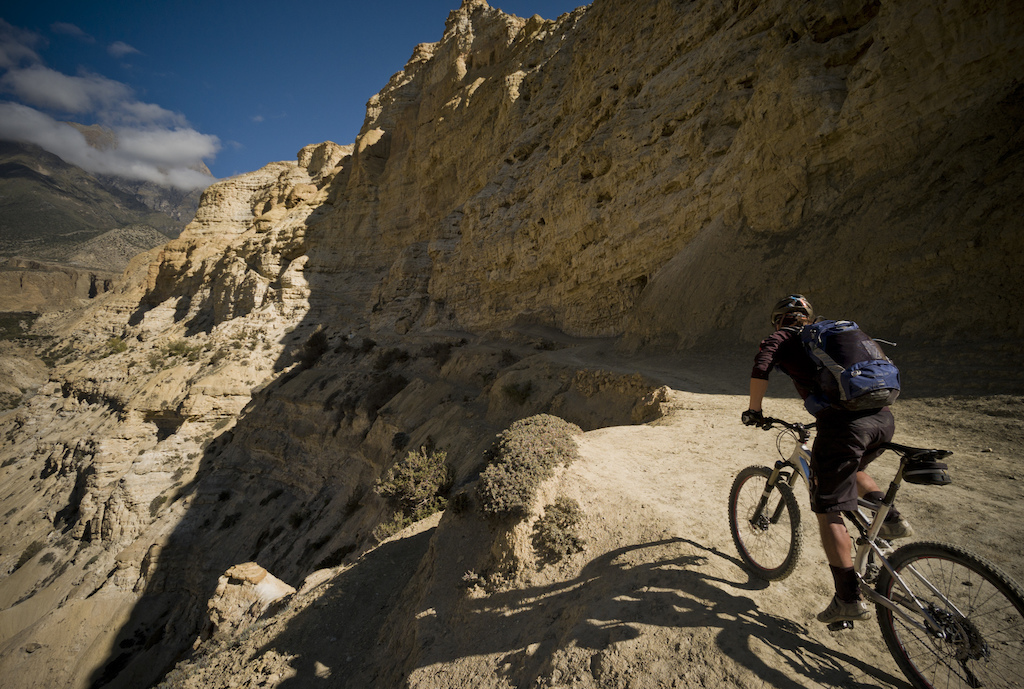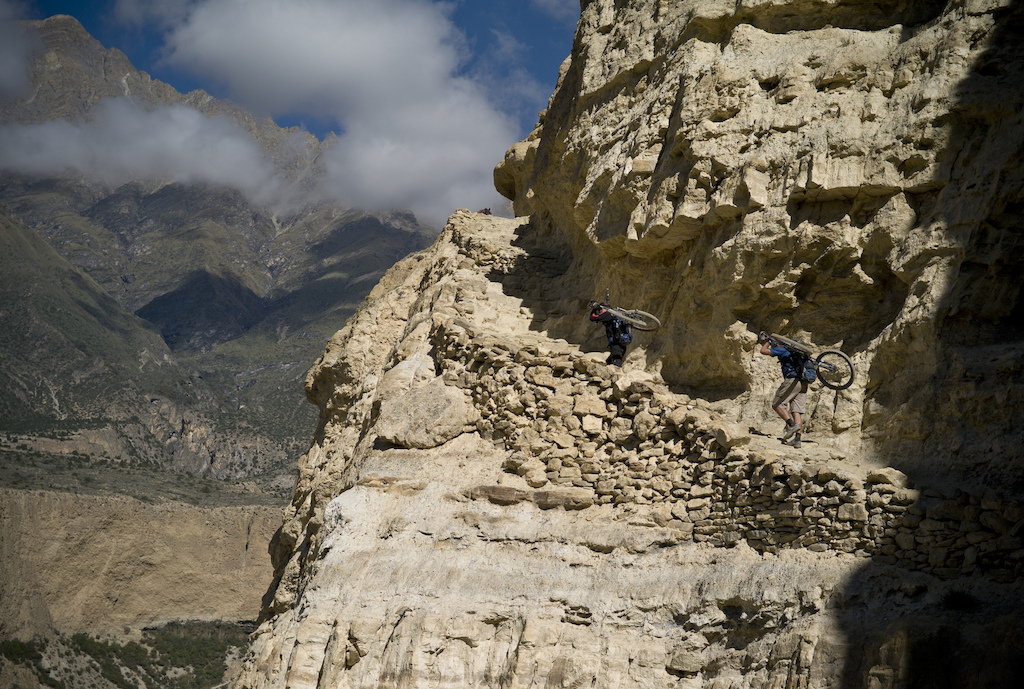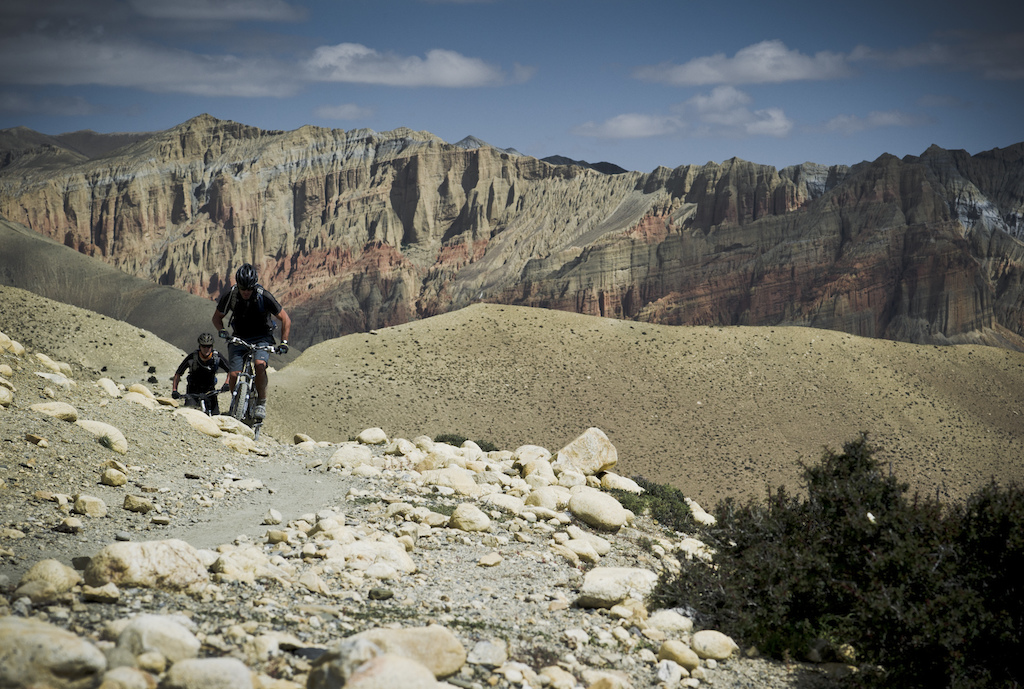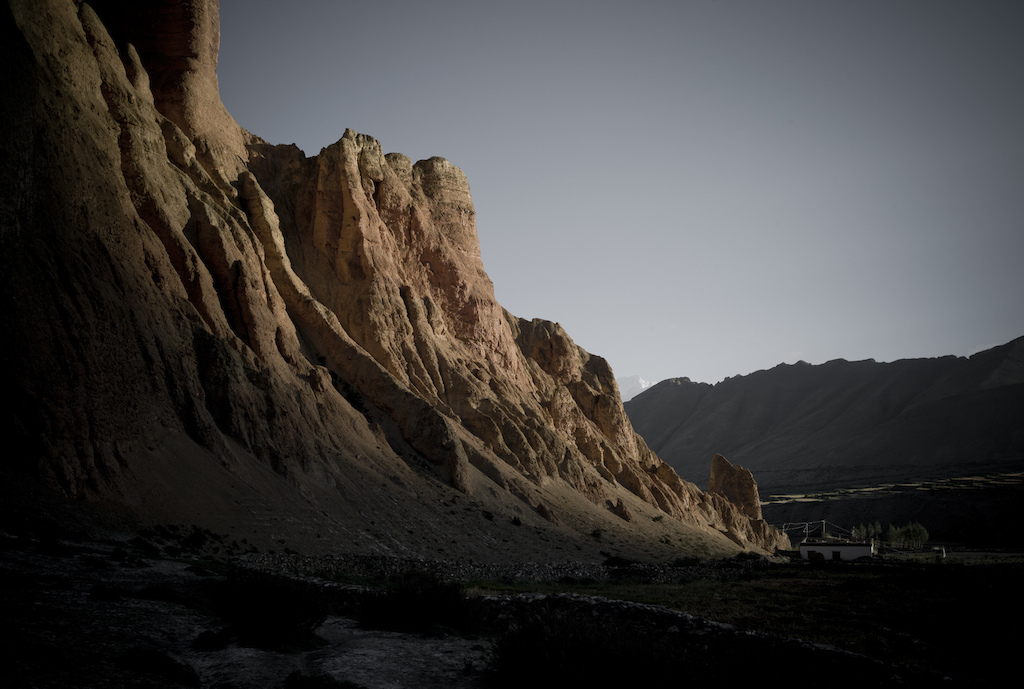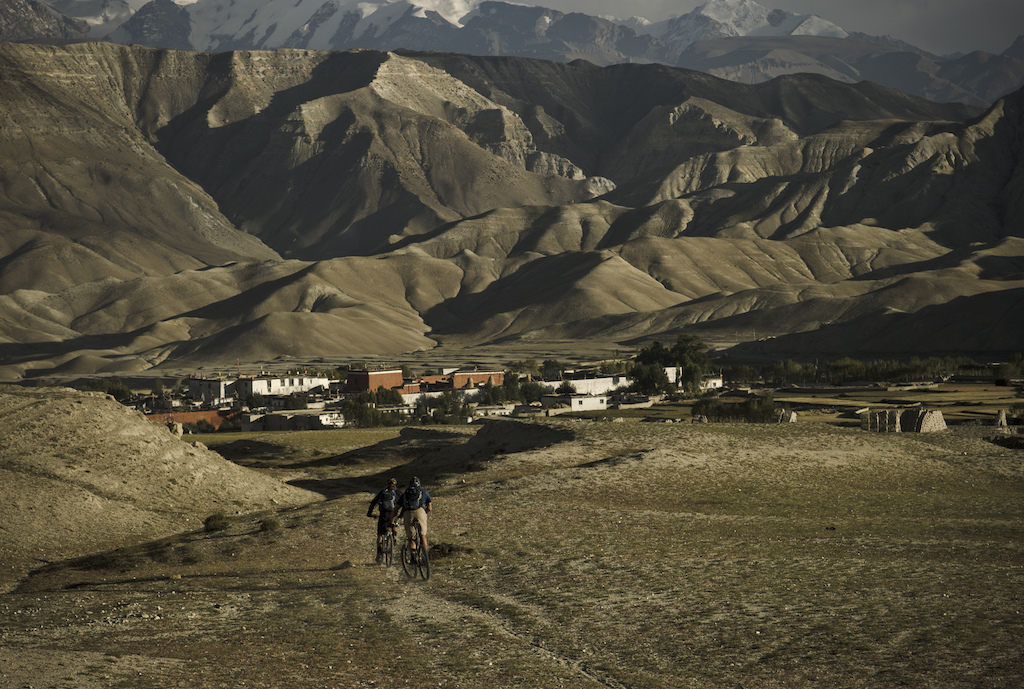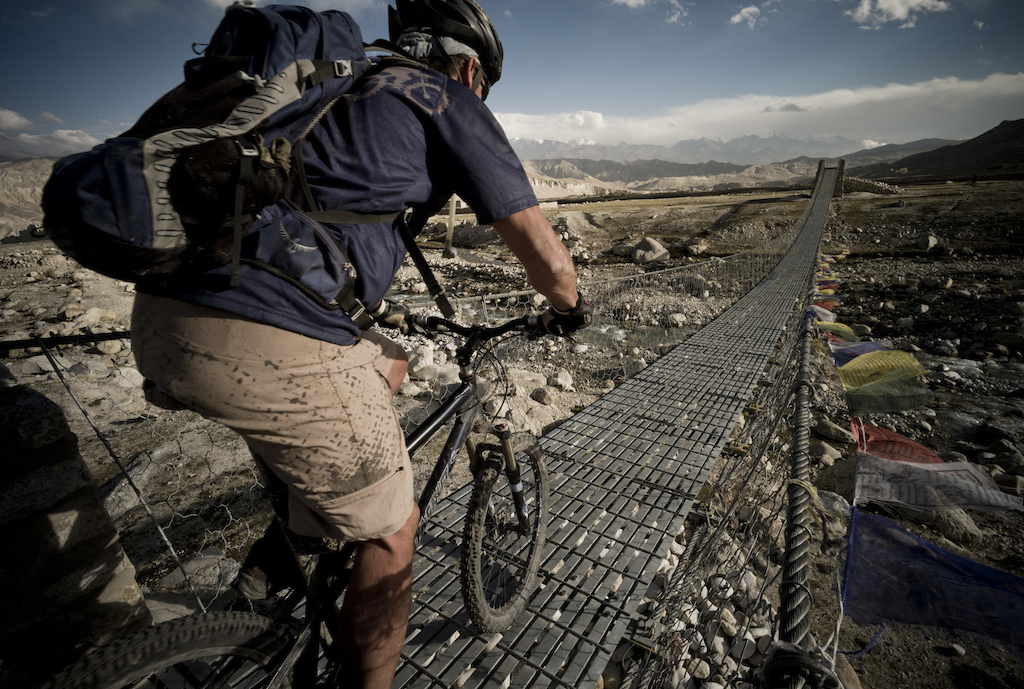No vos perdeu aquesta sel·lecció de trucs
dilluns, 31 de març del 2014
Resultats del campeonat de Balears de Descens
Aquest passat cap de setmana es va celebrar a Manacor el Campeonat de Baleatrs de Descens on hi van participar tres dels nostres riders.
Va ploure tot el dia i el terreny va quedar ple de fang y les condicións van ser molt dures. Pero els descenders no varen agafar por i es varen presentar un total de 72 corredors. Tot un exit en aquest tipus de proves.
Tambe Hem de donar la enhoracona a la organització que anava a carreg de S´ñ Escapada.
Els nostres Bikers van complir y van deixar un cop mes el llistó ben alt.
Cal destacar la posició del nostre corredor mes jove, En Xavi Burguera amb una segona posició a la categoria Cadet y la primera posició de en Guiem Aulí en la categoria Sub - 23 y segon de la general.
No va tenir tanta sort el nostre pilot mes veterà, En Guiem Roig ja que va tenir una caiguda a la primera mànega, i ho va haver de jugar tot a la segona. encara així va fer un molt bon resultat quedant 8 de la seva categoría.
Resultats:
Xavi Burguera : 2º posició de cadets. Temps: 1 min. 25 seg.
Guillem Aulí : 1ª posició de sub 23. Temps: 1 min. 14 seg.
Guiem Roig : 8º posicio de Elite. Temps: 1 min. 21 seg.
Enhorabona a tots per els resultats.
divendres, 21 de març del 2014
Ciclocross a sac: Chris Akrigg Does Cyclocross
Es video de ciclocross que farà que tenguis ganes de comprar una bici de ciclocross
dijous, 20 de març del 2014
Campionat de Balears de Descens dia 30
El proper diumenge dia 30 de març es el Campionat de Balears de Descens i primera cursa de la temporada.
Tots els nostres riders estan impacients perque arribi aquest dia i donar-ho tot.
Ja sabeu, tots a Manacor per animar i donar suport.
Ànims Ermassets. GASSSSSS !!!!
El Tibet amb BTT
Impressionant reportatge de BTT pel Tíbet. No vos ho perdeu.
Extret de Pinkbike.com
Time is not on our side. Looking North from Kagbeni, on the edge of the Upper Mustang, my eyes are met by a sea of dust-shrouded peaks. Somewhere on the other side of these 6000 metre leviathans sits Lo Manthang, an ancient walled city of Buddhist monks and the gateway to the Tibetan plateau. This “city” has a king and 300 inhabitants but no airport, and our chosen trail is the only way to reach it. It’s an undertaking will demand 10,000 meters of climbing at near 4000m elevation. It would be a reasonable challenge for any rider even without the time pressure of having only a ten-day permit to get there and back. Five days in, five days back, -it almost sounds like a race against the clock, but the real race is to ride this trail before it‘s swallowed up by bulldozers in the name of ‘progress’.
Winding through the Nepalese ancient Kingdom of Upper Mustang -a land so rugged and windswept, so inhospitable and so mountainous that bikes are of no use here- this 120 Km long ancient trail has echoed with the clatter of feet and mules’ hooves for centuries. Yet, times are changing. The Chinese are pushing a jeep track south from Tibet, attempting to exorcise the mountain demons that play havoc with Chinese exports. And with the road will come change, some of it for the betterment of the locals, yet some for the detriment of an area that has geographically and politically remained isolated from the outside world. We’ve come to the area to try to ride the trail – or what’s left of it- before it disappears completely beneath the tedium of jeep track.
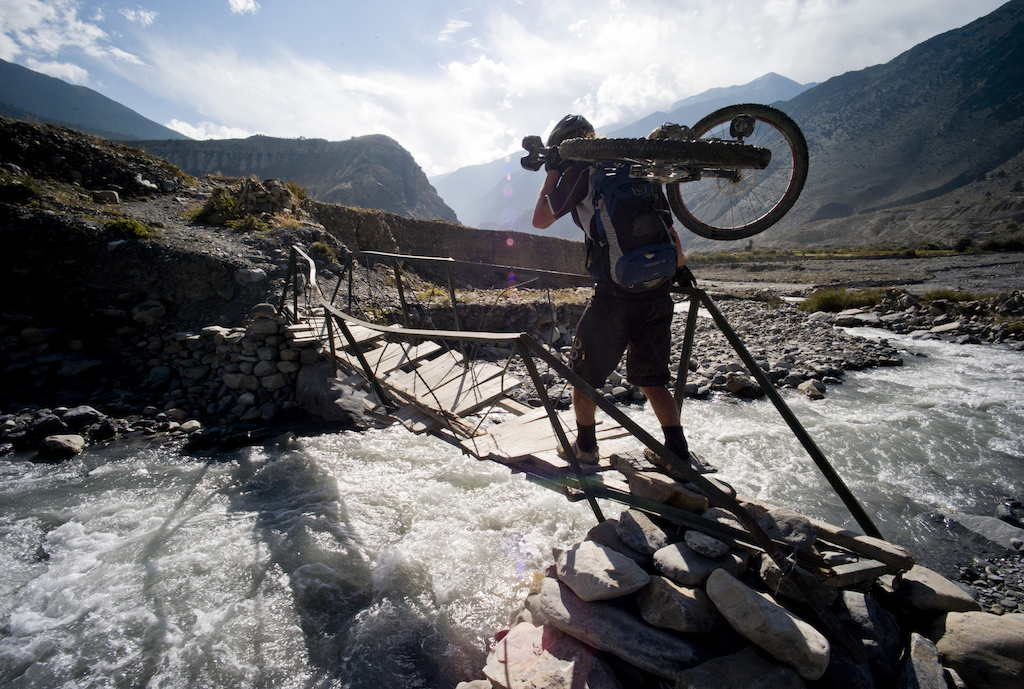 |
 Here even the little bridges can be a challenge. This one tilted 30 degrees to the side when you walked out on to it, something we only found out once Seb lost paper-sissors-stone to be first Here even the little bridges can be a challenge. This one tilted 30 degrees to the side when you walked out on to it, something we only found out once Seb lost paper-sissors-stone to be first |
We start from the small village of Kagbeni, sitting on the downhill side of the popular Annapurna circuit trek. It’s a relatively easy -if scary- place to reach. You just have to trust one of the 20 seater early morning flights from Pokhara and an hour later you’re touching down in Jomsom, on a little runway surrounded by monster peaks. Try to come later and the strong, dust-laden wind that blows incessantly in the afternoon, will have you grounded. Or worse.
It’s this wind that paints the backdrop to our 10 day self guided ride to Lo Manthang and back. At times when the mercury rises towards 30C it’s cooling effect is appreciated. At others, when our energy levels are low and we still have distance to cover it is cursed. Either way, there is no escaping it. It tears at Buddhist prayer flags and rattles the thin window glass of our tea house accommodation. It throws grit in our eyes and tries to sweep us from swing bridges suspended high above angry boiling rivers. But it doesn’t stop us.
Rumour has it that only one group of foreign mountain bikers has attempted the ride we’re setting out to do. -Italians apparently- and we hear of their progress from a couple of the tea houses we stop at. They passed through only a month earlier. Though the caress of mountain bike tyres has been rare, the trail we follow is centuries old. It forms an ancient trade route, allowing tea to be brought north from India to Tibet, in exchange for salt, dug from the Tibetan plateau, heading south.
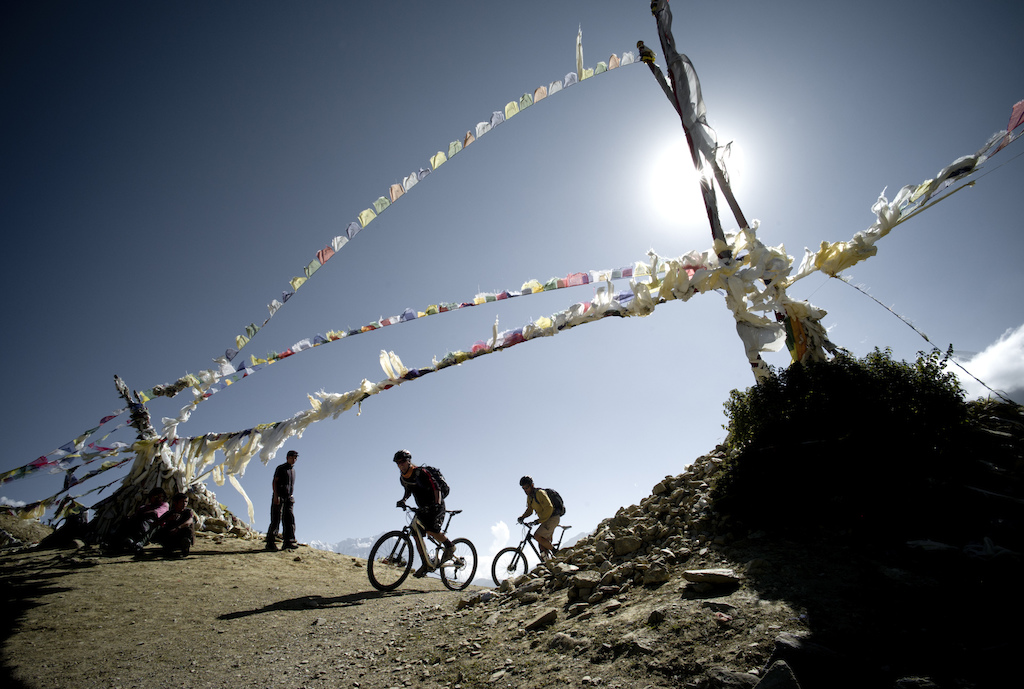 |
 Prayer flags line every high mountain pass. I am guessing people put them there to pray they don't have to climb it again. Prayer flags line every high mountain pass. I am guessing people put them there to pray they don't have to climb it again. |
We roll out of Kagbeni early, check in with the authorities and get our passes stamped. The clock starts ticking. Debate is rife about why foreigner access to the Upper Mustang is restricted. Officially it’s to protect the ancient culture, customs and lifestyles of the Upper Mustang inhabitants. This doesn’t stop televisions make it through though. I hear from unofficial sources that it’s because when China moved in on Tibet, the region became a hideout for CIA operatives giving assistance to the Tibetan resistance. When the Chinese discovered this fact, they “leant” on Nepal and insisted that foreigners be banned from the Upper Mustang. The region only re-opened to foreign tourism in 1992. Whatever the reason, now $500 and some paperwork gets you an entry ticket.
With Annapurna at our back we ride along the first few kilometres of rough jeep track that will, if the authorities are successful, eventually connect with the Tibetan end of the same road. The road’s reach hasn’t taken it far though and within two hours we pass decrepit, rusting yellow bulldozers sitting idle. Punished by the thin air at 3000m, we claw in just enough oxygen at to granny ring up climbs, suspended high above the braided Kali Gandaki River.
It’s October but the Asian sun is still fierce. Sitting in the rain shadow of the mighty 8000m Annapurnas, the Mustang region escapes the deluge that is the monsoon summer. The landscape around us is arid, dusty, a hundred shades of red and orange. The only trees we see are those that sip from irrigation canals, the umbilical cords of tiny villages that cling to survival in this hostile land. The landscape is harsh and unforgiving, but at the same time strikingly beautiful.
One benefit of the arid, treeless terrain is that we can see our trail from afar. We can plot its course across distant hillsides, match it on our basic map and figure what we have ahead of us. On the down side we also get to see the enormous climbs and the lofty passes that sit between us and our bed for the night. Such passes here are high and formidable. Still trying to acclimatise, the climbs are frustratingly slow. We’re soon accustomed to having bikes slung across our backs.
Our first serious hike-a-bike comes on day two, almost straight out of the gate. Leaving the village of Chhusang we are carrying bikes within ten minutes. The map suggests the elevation gain to be 700 metres, and is marked with the words “steep climb”. It’s an understatement. What meets us is a spiralling, exposed ledge, punctuated with steps and way too steep to ride up. It clings to the vertical wall of a canyon and affords no room for error. We are only half an hour up it when we meet a train of mules coming the other way and are forced to retreat to a safe passing place. Although I don’t realise it at the time, this same trail will make an incredible descent on our return leg, one that leaves zero room for error.
To make it easier on ourselves for $10 per day we each have hired a porter to carry our overnight gear on the trip. It’s a luxury that allows us to ride the technical descents unencumbered by bulky packs. But as we grunt up the side of the Ghyakar Khola gorge, I take stock of our situation; we three mountain bikers hauling both day packs and 13 kilo bikes on our backs, and our three porters, each carrying a simple, 10Kg pack. The all smile broad toothy smiles. It’s the easiest job they have ever had.
With the road far from being finished yet, the trail is still the only connection between Lo Manthang and the rest of Nepal. Regular local foot traffic and the fact that the Nepalese like their chai means there is no shortage of tea houses to be found, each located at what would be the middle or end of a day’s walk. We use these for our sleeping and eating needs, although the cold showers when found, are less compelling.
Although the distances we set out to ride each day are not great, the altitude more than takes up the slack. We begin each day with a climb and descent, then repeat again before arriving, late afternoon at our planned accommodation. The climbs become slow, laboured tests of stamina, the descents a mix of fast and furious swooping turns and slow, technical staircases. Both are equally rewarding after the exertion to reach them.
As we sit drinking tea and beer and eating curry in one tea house we discuss the idea of the road. We’re drawing a blank as to how the road builders will get around the steep, narrow Ghyakar Khola gorge we hiked up. When roads are built here they often don’t last long, with landslides and snow dragging them to ruin within a year. The Ghyakar gorge must represent less an ambition and more an unachievable dream for road builders.
As we continue north on our trail, our ride becomes punctuated with trailside gompas (Buddhist temples) and swing bridge crossings. We crest two 4000m passes, each adorned with strings of prayer flags before unexpectedly meeting the end of the northern extension of the road just outside the village of Ghemi. The road builders have been busier than we expected, the road pushed further south from Tibet than we anticipated. For a moment as we look down at the ribbon of jeep track cut into the valley side below, we resign ourselves to the fact that perhaps we’re too late. And then we spot our salvation –the original trail darts off to our left, disappearing up and over a small pass. The bifurcation of trail shown on our map is a true representation, but while one trail has now been sacrificed to become jeep track, the other still exists in its original form. We turn left.
Day three is universally hard work on such multi-day trips, and ours is no different. After the momentum of the initial trip excitement starts to wane, the fatigue begins to set in. We roll into the village of Dhakmar –no more than a cluster of mud brick houses set below red cliffs pockmarked with ancient caves- tired and hungry and in need of a good bed. There is one tea house and its perhaps the most basic we have come across. The window glass is cracked and the beds unleash a cloud of dust when touched. There is no shower, hot or cold. We slump, broken onto the dusty beds, pulling our sleeping bags over our tired, dust-caked bodies and individually ponder what we are trying to achieve. The single guest room that we occupy is silent. Every adventure trip has moments like this.
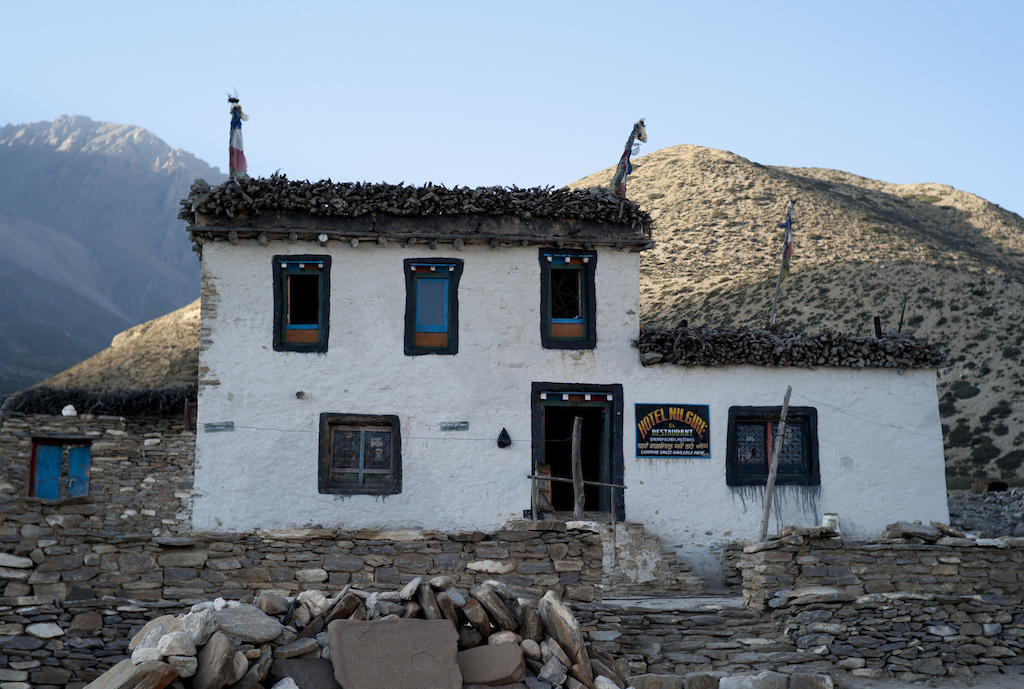 |
 Typical tea house accommodation -this village was just this and two other buildings, but there was no shortage of curry. And it even had beer. Result! Typical tea house accommodation -this village was just this and two other buildings, but there was no shortage of curry. And it even had beer. Result! |
As the mercury slides towards zero degrees, we seek warmth in the kitchen and watch as our host slaps chappati flat breads into shape and sets about cooking our dinner over a yak-dung fuelled stove. We are instantly handed steaming chai and I am entrusted to hold her baby. Speaking some English, our host explains the intricacies of life out here, in one of the most remote corners of the planet, living in a village reachable only on foot. That one night in Dhakmar becomes the most memorable and rewarding of our 3-week trip.
Out of the door next morning we head straight into our first climb to the 3820m Mui La (pass). It’s the first of two we will face that day, a long ride that will see us arriving in Lo Manthang by nightfall. By the time we crest the second pass, the 4230m Marang La, and the highest of our ride, I am broken. The pass comes via a series of false summits each of which nearly breaks my spirit. I dig deep inside to find the mental stamina to push onwards and cresting the top, am hit by the sight of the vast Tibetan plateau to the north. Gone are the pointy Annapurnas of the Himalayas to be replaced by a landscape equally as unique and beautiful. And before its sweeping rise sits the red-walled city of Lo Manthang, our destination.
We sling legs over bikes again and re-energised by the sight of the 400m, 8 km descent laid out before us, we push off into the void once more.
Rolling into Lo Manthang is a unique experience for us all, and the locals alike. We hop drainage ditches and weave between wandering cows, watched by a hundred grimy faces of kids peering from behind doorways. We roll past Buddhist monks and women bent double under the weight of bundles of animal feed grass. We have been transported back in time and only the occasional Chinese motorbike brings us back to contemporary times.
We have made it, we have reached our destination. We check into a tea house, down litres of chai and grin profusely at each other. We have ridden one of the world’s most unique and remote trails, and managed to dodge the evils of the road for most of the way. Tomorrow we will ride a loop further north towards the Tibetan border, just for the hell of it. We’ll explore caves that were inhabited a thousand years ago, and we’ll roll back to Lo Manthang destroyed again. And the day after we’ll start to retrace our way back to Kagbeni and beyond, beginning another 10,000 m of climbing and descending. And when we get back to Pokhara we’ll still be smiling from the rewards, the frustrations and challenges of riding bikes in such a place, on such a trail. And we’ll know that no road can ever deliver that.
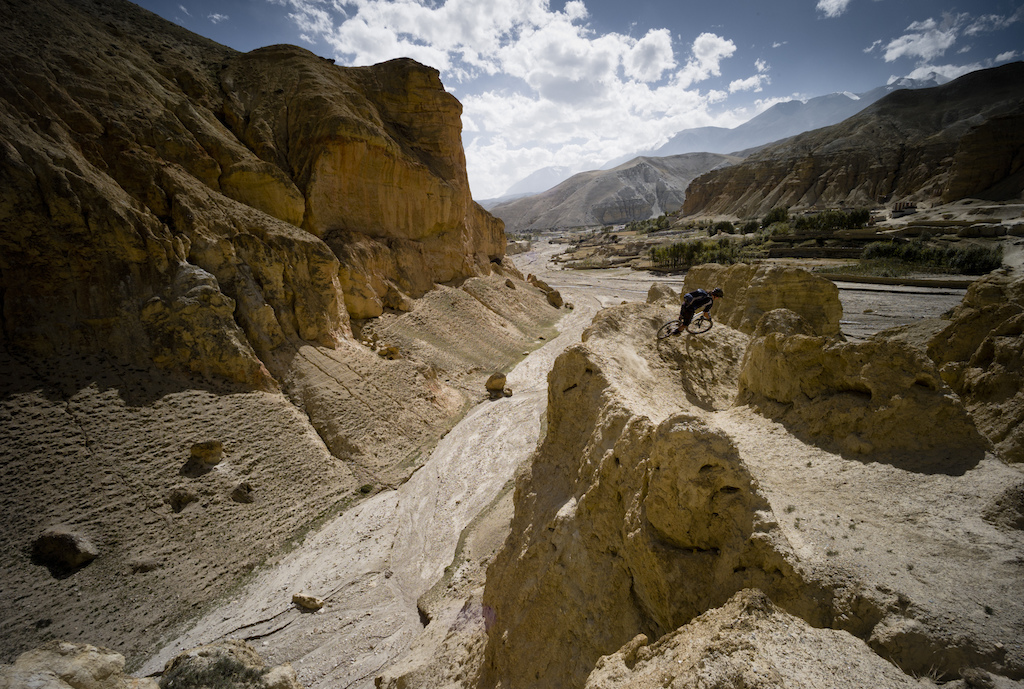 |
 Exploring caves north of Lo Manthang we found this wall ride to play on. Not somewhere to let it drift too much though. Exploring caves north of Lo Manthang we found this wall ride to play on. Not somewhere to let it drift too much though. |
INFO: To enter the Upper Mustang you need a permit, costing £500 for 10 days. Usually this is obtained 3 weeks in advance by a trekking agency in Nepal (Kathmandu or Pokhara). Alternatively ride trails in the Lower Mustang around Kagbeni, for which no permit is needed. Kathmandu is big, noisy and doesn’t warrant a stay more than a couple of days. Fly on to the chilled town of Pokhara (1 hour, £50 o/w) or take a bus (7-9 hours, £5 o/w). Snow arrives in the Mustang after November, but the summer and autumn have warm (20-25 C) days and cooler nights (5 -10 C). Late October starts to drop below freezing at night, so take a sleeping bag to ward off the chill in the unheated tea house bedrooms.
Take essential spares (chain links, cables, spare rear mech and hanger) though you can find some spares in Pokhara at the MTB rental centres. Take sunscreen, headache tablets and a scarf to protect against the dust storms. A katadyn ceramic water filter is key to filling your hydration packs with clean drinking water each day,. There is no bottled water in the Upper Mustang. Maps of the region are available locally in Kathmandu of Pokhara. Trail food can be bought each day.
Contact: Tangi at www.nepalmountainbike.com
 |
 You know the day will go well when you start it with tea served on a tray decorated with pics of kittens. You know the day will go well when you start it with tea served on a tray decorated with pics of kittens. |
dilluns, 17 de març del 2014
Nova Intense Carbine 275! Pilotada per en Chris Kovarik
Impressionant video de presentació ;-)
Get Drifty! Watch Chris Kovarik Rally the All-New 2014 Intense Tracer T275 Carbon - More Mountain Bike Videos
Get Drifty! Watch Chris Kovarik Rally the All-New 2014 Intense Tracer T275 Carbon - More Mountain Bike Videos
dilluns, 10 de març del 2014
2014 Trek Fuel EX 9 29: Reviewed
Complet reportatge d'una bici per a fer camins i quilòmetres sense restriccions, ni pujant ni baixant. Una màquina molt capaç fotografiada dins un entorn senzillament espectacular.
Es reportatge prové de nsmb.com
A Bike That Deserves Its Own Category
Words by Omar Bhimji. Photos by Morgan Taylor.
March 10th, 2014
But when Trek agreed to send us a mid travel 29er to review in the depths of winter, I wasn’t worried. I envisioned fleeing from our snow-bound mountains to lower, tamer, southern riding locales, where the bike could be put through its paces in more, uh, appropriate terrain.
As it turned out, we weren’t in for that kind of winter. And so the central question of my review inadvertently emerged to challenge my assumptions: does a bike like Trek’s 120mm Fuel EX 29 have a place on the North Shore?

Riding styles they are a-changin’ here on the North Shore. Smaller bikes are getting more capable and the rider’s desire to cover distance is increasing.
Born in 2001, the versatile Fuel has long been Trek’s best selling full suspension model. For 2014, the company broke with 13 years of tradition and made the Fuel a 29er only platform. Trek has a long track record with wagon wheels, first through its affiliation with mountain-bike-originator-come-29er-evangelist Gary Fisher, and more recently through its amalgamation of Fisher’s brand and bikes into its core lineup. This year, Trek upped the ante on its investment, bringing wagon wheeled versions of its flagship Fuel and Remedy bikes into the young-but-thriving trail 29er market.
Tech
I haven’t done a formal survey, but it wouldn’t surprise me to learn that Trek leads the mountain bike industry in proprietary two-to-four letter tech-acronyms. The Fuel EX 29’s rear suspension design boasts no fewer than three: the ABP (Active Braking Pivot) suspension design; the Trek-designed, Fox-built DRCV (Dual Rate Control Valve) variation on the standard float air spring; and the one-piece EVO rocker link. Not to be left out, the Fuel’s front-end sports a monikered E2 tapered headtube, and the fork has a custom 51mm G2 offset. Other noteworthy technical features of the Fuel EX 29 include internal routing for derailleurs and a dropper post; ISCG mounts on a press-fit bottom bracket shell; and an integrated downtube guard on both aluminum and carbon frame models.
Fit
The first real mountain bike I ever bought was a Large/19.5” Rocky Mountain Hammer, and that’s been my sweet spot, give or take half an inch, for twenty years. But the 19.5” Fuel EX 29 that Trek sent us looked small out of the box; and when I pulled it together and saddled up, it fit small, too. Out came the measuring tape and it seemed like the bike had lost an inch in seatpost length. We contacted Trek and they confirmed we had indeed been sent a 19.5” – but explained that their sizing was virtual, so the bike would in fact measure 18.5”.
Huh? It seems that Trek’s frame sizing system in stuck in the era when mountain bikes transitioned from horizontal to sloping top tubes: they base their measurement on virtual sizing, rather than actual numbers, in an effort to allow riders to “accurately compare sizes” given modern geometry. The good news is that Trek offers the Fuel Ex 29 in six different sizes, from 15.5” to 23”, so any rider should be able to find a size that fits. The bad news is that you might well have to study the numbers carefully, and rethink your size and preferences, in order to get that fit; I relied on past experience and ended up having to run more seatpost and steerer tube than usual to get my saddle and cockpit at the right height, though the bike’s reach was spot on.

Trek’s virtual sizing means seat tube measurements don’t line up with stated frame size; our size 19.5 tester measures out at 18.5″. Reach measurements, however, are in line with what you’d expect for the advertised size.
For review, Trek sent us a Fuel Ex 29 9 (see our preliminary review HERE), decked out with a mixed bag of high zoot goodies and Trek house-brand Bontrager stuff. Sitting at the top end of the aluminium framed Fuels, the bike’s spec is solid and, for the most part, well thought out with no glaring weak links.
Brakes and drivetrain are full Shimano XT, a no-brainer spec on a high-end bike that paid off as well on the trail as I imagine it would on the showroom floor. Biting down on 180mm rotors on both wheels, the brakes offered consistent and effective stopping power. Both front and rear derailleurs provided quick, reliable shifting, with the Shadow+ unit keeping everything quiet and in-line over the course of the review period without the assistance of a chain retention device. My only gripe was with the 24/38 tooth rings on the 2X10 cranks: while it provides an excellent range of gears, I found the 14 tooth jump simply too extreme to be of much use while riding.
Out front the Fuel EX 9 gets the highroller treatment with a Factory Series 32 Float, which boasts pretty Kashima stanchions and an adjustable Trail compression damper setting. At the risk of engaging in small sample size theatre, the fork’s performance suggests that Fox’s updated CTD damper has indeed addressed the well-warranted complaints its first iteration drew: with the spring rate set, the compression damping in the trail settings provides a useful range of options to suit different conditions; I appreciate not having to choose between a plush-and-divey or supportive-and-teeth-rattling front end.
The Rockshox Reverb Stealth completes a trifecta of out-of-the-box spec home runs. While everyone has their personal favorite dropper post, it’s unlikely there’s a more welcome stock option on the market than the Reverb, and the stealth routing helps keep the Fuel EX 9’s high polish finish shining. The Reverb lever’s inability to play nice with Shimano brakes is well documented, but the awkward pairing didn’t prove all that cumbersome.

While Reverb levers are not yet getting along with Shimano brakes, one can’t really argue with SRAM’s Stealth dropper being spec’d.
The one piece of Bontrager spec that I found myself dwelling on was the round bits: wheels and tires. Bontrager may have updated its Rhythm Elite wheels this year, but it seems the 2014 Fuel EX 9 was tasked with clearing out old stock. Now there’s nothing overtly wrong with the Fuel EX 9’s wheels – they didn’t blow up or even require maintenance over the course of the review, and their ample 28mm width played well with high-volume tires – but…

The Rhythm Elite 29 wheelset is on the heavy side for the bike’s intentions – a wheel swap livens up the Fuel EX nicely.
Ahem.
If you’ve ridden a set you know this to be true: nothing puts zing into a wagon wheeler like a set of light, stiff hoops. While the Fuel EX 9 29’s Bontrager Rhythm Elite wheels took everything the North Shore threw at them without flinching, they felt out of place on a bike this spry. The wheels required conspicuous effort to be brought up to speed, and their pronounced gyroscopic effect seemed to fight against my efforts to throw the bike around. As the wheel page on Trek’s website notes, next to the bike frame itself, nothing has a bigger impact on your bike’s performance that your wheels; if you’re planning to invest more than $4000 in a bike, I feel like you want your on-trail experience to be all “whoa!” and “weeeee!”, without any trace of “phew…”
(In the interest of thoroughness, I rode the Fuel EX with my personal wheelset, which dropped ~300 grams of rotational mass from the bike without sacrificing rim-width. As expected, it was very, very good.)
As for the stock rubber, I’ll quote a fellow NSMB reviewer and say that while I’m sure Bontrager’s XR3 Team Issue tires work great somewhere, that somewhere definitely wasn’t where I was riding! The XR3s seemed to work fine on smooth, hardpacked dirt, but the merest hint of moisture, looseness or hard surfaces sent them skittering like ball bearings across a polished glass floor.
Up
Over the past few years I’ve spent most of my time riding bikes featuring a fair bit of anti-squat in their suspension design: put power to the pedals and you can feel the rear end go taught; it’s become an efficient, comforting feeling. The ABP on Trek’s Fuel EX seems to have little if any anti-squat built in, which initially felt disconcerting. But as soon as I started playing with the CTD switch on the rear damper, things quickly fell into place.

Trek’s ABP suspension design is quite active, and takes some adjustment for riders used to bikes with anti-squat built in. Once you learn how to take advantage of this, the Fuel EX will motor up just about any technical climb you put in front of it.
Beyond its ability to make short work of long, grueling ascents, and despite its hefty wheels, the Fuel EX was a brilliant all around climber. In tight, stop-and-go sections, the bike was sure-footed and easy to maneuver. And when things got chunky, give the aforementioned wheels even a hint of momentum, and the bike would motor up and over just about anything in its path.

You may find yourself reaching for the switch on your shock to get maximum pedaling efficiency out of the Fuel.
While its climbing chops were apparent from the get-go, it took me a bit longer to find the Fuel Ex’s sweet spot as a descender. Given the bike’s steep-ish head angle, long-ish chainstays and short-ish travel, that’s probably to be expected. And again it begs the question, which is perhaps the crux of this review: does what amounts to a juiced up cross-country bike have a niche or fill a need on the North Shore?
The first step in getting comfortable with the bike was getting comfortable on it. Despite a stack-height comparable to many 6” all-mountain bikes common to the Shore, I found myself having to run several spacers below the stem and a wider, taller bar on the Fuel Ex to keep from feeling like I was going to lose the front end in corners or get launched over the bars on steep pitches. Once I had the bike feeling balanced fore-and-aft, and swapped on some high volume Maxxis rubber to improve its balance side-to-side, I started working out how to push the bike in order to carry speed and extract the maximum amount of fun from each ride.
The secret to rallying the Trek Fuel EX 29 seems to be keeping a light touch up front while driving with and relying on the back-end to work the bike and terrain. The technique may be somewhat alien to riders who are used to riding the front end of a bike and letting the rear play catch-up. But I found it to play to the strengths of the bike while minimizing elements of its character that might otherwise prove liabilities:
Despite the damper improvements it brings to the table over last year’s models, the 2014 Float 32 CTD is still a lightweight cross country fork that lacks torsional stiffness and doesn’t exactly have oodles of travel. But keeping your weight balanced or biased rearward allows the fork to ride high and retain its composure even when the chunk comes hard and fast.
The Fuel’s 69.5º head angle similarly seems to reward a rearward weight bias. Leaning forward on steep terrain or in fast corners with the intent of keeping the front wheel weighted and tracking induced unpleasant flashbacks to an era of outdated geometry. But thankfully, the Fuels’ big wheels and sweet tracking fork allowed me to maintain all-important front wheel traction without having to overcommit out front.
The Fuel EX’s 450mm chainstays are pretty normal for bikes in this category, but longer than one generally finds on bikes in these parts. The long back end seemed to hang up and would miss lines when I was trying to ride the bike as I’m used to. But when I put more thought and effort into pushing the back end around, I found it provided a stable, almost carving feeling around the trail and through corners, even when things got chunky or loose. The DRCV shock probably deserves a lot of the credit here: as advertised, it was tight and responsive most of the time, but transitioned seamlessly into the second part of its stroke when needed, maintaining incredible composure and control under pressure and on bigger hits.
My time pushing the Fuel EX down through the teeth of the North Shore mountains suggests that yes, it can be done. But, as I alluded earlier, the more important question is perhaps not whether, but why: what’s the point of riding a cross country bike in some of the most demanding terrain intended to be ridden on two wheels, when there are such capable, gravity-biased tools built for the job?
All Around
I ignored the question on my first few rides as I focused on dialing in the setup and fit. It began nagging me as I worked to learn how to push the bike faster and harder. But it was only when I became comfortable riding the Fuel EX up, down and all around that the answer began to emerge.
I started noticing that I was wrapping up rides with more energy and less soreness than expected. Tagging along on Morgan’s Garmin-induced death march to knock off the first 1000 meter day of 2014 left me gassed, but the next morning my legs were mercifully pain-free. I have a go to out-and-back ride across the base of Seymour mountain that I rely on to tire out my seemingly indefatigable dog; we hit it today and he’s out cold as I type this, hunched over my computer pain-free as the clock ticks on past midnight.
“Spry” is the first word that jumps to mind when I try to describe the Fuel EX 29. The bike ate long climbs and crux moves on the way up, blew through technical trail with incredible agility and efficiency, and (with the right approach) rallied descents I would have thought out of its league, all without beating me up; it feels like the bike is doing more than its fair share of the work.
Conclusion
Time was, most of us would haul a 35 lb bruiser of a bike up to the top of the hill in order to smash back down, and then call it a day. These days mountain bikes are getting lighter, more efficient AND more proficient – doing multiple laps or linking up different trails for a longer ride is becoming the norm.
Trek’s Fuel EX 29 takes this shift to another level, allowing its rider to power up punch and grunt climbs and slice and dice technical trail with ruthless efficiency. And while its 120mm of suspension limit the size of the moves in the Fuel’s wheelhouse, the bike’s prowess on steep and fast lines belies its short travel suspension and XC geometry.

The Fuel EX 9 29 is too capable to be considered an XC bike, but not quite my definition of Trail… it deserves its own category.
The so-called little bikes just keep getting more capable… what’s your sweet spot for an all day ride?
Subscriure's a:
Missatges (Atom)












